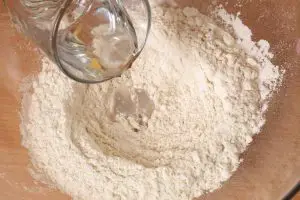Are you throwing a dinner party or a get together and are looking for the perfect appetizers to serve to your guests? If so, then bruschetta and/or crostini are both ideal.
These small, bite-sized, crunchy, toasted breads can be served topped with a variety of different toppings and can be made to look as basic or as fancy as you would like.
These decidedly Italian bread products often served as part of a delicious Italian antipasto are often confused with each other as they do look similar, have a similar texture, and they may even taste similar in some respects. A bruschetta and a crostini however, could not be more different.
If you’re looking for antipasto ideas or appetizers to serve to your guests for an upcoming social event, bruschetta and/or crostini are both ideal. To help you understand the key differences however, here’s a look at the differences between a bruschetta and crostini.
Last update on 2025-06-09 / Affiliate links / Images from Amazon Product Advertising API
What is bruschetta?
Bruschetta is a grilled bread, usually made from sourdough, that is authentically grilled over an open fire or open coals.
In fact, the word ‘Bruschetta’ is derived from ‘Brucare’ which is an Italian word which literally means ‘to roast over coals.’
As you might expect, bruschetta is crunchy and smoky, with an incredible appearance thanks to the coal and grill marks where the bread has been roasted and charred.
After the bread has been roasted to perfection and the chef is happy with the grill marks, the bread is next rubbed with fresh peeled garlic cloves to give it a subtle hint of garlic. Remember, as delicious as garlic bread is, bruschetta is not a garlic bread. The idea behind the garlic cloves is to give a hint of garlic by giving a very subtle garlic kick.
The bread then goes up another level as it is drizzled with fresh extra virgin olive oil. Now, the bread can be enjoyed as is, or it can be topped.
A wide range of toppings and topping combinations can be used to create the ultimate bruschetta, though you can’t go wrong with vine-ripened sundried tomatoes, fresh basil leaves, mozzarella cheese, and a few chilli flakes.
What is crostini?
We now know what bruschetta is, so now let’s see how a crostini differs.
Crostini translates to ‘little toasts’ in Italian, so again, you can guess what this type of antipasto is going to be.
Crostini may look similar to bruschetta, but it is made from slices of baguette styles of bread, while also being cut smaller and rounder. People often confuse crostini with being French, as opposed to Italian, because French-style baguette breads are usually used.
The bread is then toasted in an oven until it is crispy and crunchy, before being brushed with a light coat of extra virgin olive oil, and can be topped with a selection of ingredients, including fresh meats, vegetables, seafoods, herbs, spices, cheeses, and more besides.
Popular topping choices for crostini include things such as: seafood pate, prawns, cream cheese, smoked salmon, deli meats, roasted peppers, sundried tomatoes, mozzarella, and more besides.
What are the main differences between crostini and bruschetta?
Although similar, these two foods are still very different in a wide variety of different ways, including the following:
The toasting/grilling
Crostini is typically toasted, usually in an oven, to give it the crunchy texture.
Bruschetta, however, is all about the charring and grill marks, along with the smoky flavour. An authentic bruschetta should be cooked over an open fire, or over fresh charcoal.
The bread
Bruschetta is usually made from a sourdough bread which lends itself very well to the richness of the olive oil, along with the smokiness of the charcoal it is cooked over.
Crostini, however, is made from a baguette style of bread as crostini is less about flavour, and more about texture. Crostini tends to use slightly stronger flavours for the toppings as the bread is so neutral.
The appearance
Crostini is typically sliced thinly and cut into small circles making them the perfect bite-sized treat.
Bruschetta, however is usually thicker, more oval in shape, and has visible grill/char marks from the coals and where it has been cooked.









